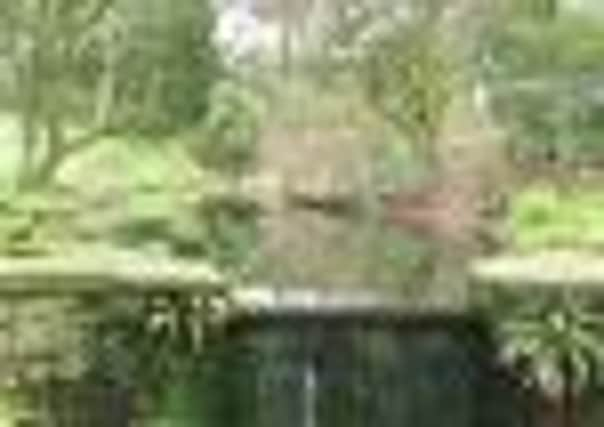Growing old gracefully


There are only a few miles – a few minutes drive – between Rode Hall and Little Moreton Hall, but they are centuries apart.
The former is a splendid Georgian hall surrounded by parkland; the latter is a wonderful National Trust-owned mishmash of 15th-century (and slightly later) woodwork, splattered liberally with thousands of tiny window panes and surrounded by just a hint of a garden – and a moat.
Advertisement
Hide AdAdvertisement
Hide AdProperty manager David Watts would like more space, but he has to do with what has been described as a house built by the equivalent of today’s soccer superstars and their Wags – big, loud and in your face. Little Moreton Hall shouts bling and was probably the early equivalent of a raised digit in the direction of Cheshire’s nobility.


It was a statement that the nouveau riche owners had arrived and they intended to stay. Did they have a garden to go with their over-the-top home? Probably not a lot, and the same has to be said today. The moat limits expansion, so visitors have to make do with a lawn peppered with old fruit trees such as quince, pears and medlars, beds of herbs and vegetables and a knot garden and yew tunnel which date from 1972.
The latter two may be young, but they complement the fantastic architecture of the wonderful old hall – the shapely knot (whose box edges take 80 hours to trim by hand every year) is designed as a mirror image of the building’s facade.
It’s quite inspiring and, on a late spring day when there are few people about, extremely peaceful and relaxing. It’s also the perfect place to sit and contemplate how anyone could create something similar – albeit probably on a much more conservative scale – in their own garden.
Advertisement
Hide AdAdvertisement
Hide AdThe hall is a different matter – it is pure theatre, pure craftsmanship, pure history. While the garden (particularly the knot) may inspire, the house just leaves the visitor open-mouthed (the perfect way to be when partaking of the excellent food in the eatery). Visit it first and then, after lunch, head off to Rode Hall to be inspired in a completely different way.
Rode Hall does have space, plenty of space and it’s as steeped in history as the hall at Little Moreton. The gardens are Grade II listed; in spring, snowdrops entice thousands of visitors; in summer, there are woodland walks, terraced rockeries, fine trees, a lake, a wild garden, a rose garden and the kitchen garden, home to head gardener and champion gooseberry grower Kelvin Archer.
He lives in the Gardener’s Cottage within the two-acre site, which, particularly during late June, is resplendent with colourful flowers grown for the hall, and vegetables cultivated, wherever possible, without chemicals. And his incredible gooseberries.
It’s not possible to do it justice in a few words; again, like Little Moreton Hall, go there, see for yourself, and come home replenished and with ideas of what you can do and what you can grow in your own garden – naturally, not so grandiose.
Advertisement
Hide AdAdvertisement
Hide AdHistoric gardens – and their accompanying houses, halls, palaces – should be compulsory places to visit, at least just once. They are living treasure chests – open them and be inspired. See what they grow, how they grow.
Always take a notebook with you, then go home and create your own bit of living history.
* Rode Hall, Church Lane, Scholar Green, Cheshire ST7 3QP.01270 873 237. www.rodehall.co.uk
* Little Moreton Hall, Congleton, Cheshire CW12 4SD. 01260 272018. www.nationaltrust.org.uk
* Information on visiting Cheshire’s Gardens of Distinction: www.visitcheshire.com/gardens